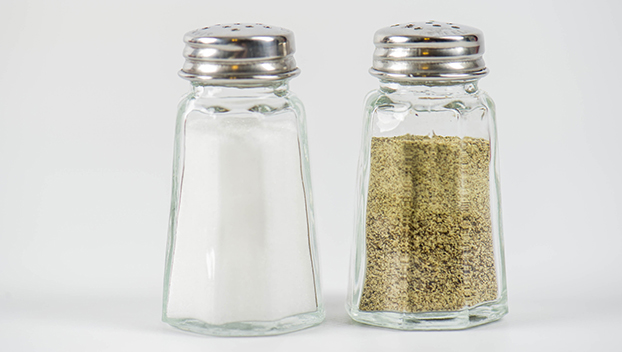HEALTHY LIVING — Put that salt shaker away
Published 12:04 am Friday, June 16, 2023
|
Getting your Trinity Audio player ready...
|
“Pass the salt.” Who hears that anymore?
Salt has been nearly banished from the table, and rightly so. Too much salt affects blood pressure — and not in a good way. But for some people, cutting back has a downside.
Too little salt — iodized salt, that is — is dangerous, too. It’s the iodine in iodized salt that helps the body make thyroid hormone, which is critical to an infant’s brain development.
Trending
A little salt is essential to good health. Healthy adults should consume salt and water to replace the amount lost daily through sweat and to achieve a diet that provides sufficient amounts of other essential nutrients.
Basic U.S. dietary guidelines suggest that adults get less than 2,300 milligrams of sodium each day, that’s about 1 teaspoon of salt, but the basic guidelines apply to less than a third of Americans.
Let’s go back and reread that, 1 teaspoon. The rest — 70 percent of the population — are middle aged, elderly or African-American. This huge majority should get less than 1,500 milligrams of sodium per day, that is about 2/3 of a teaspoon.
Just think how salty your favorite snacks taste. Eat too many salty foods (even soft drinks have sodium), and you can easily go overboard. Now, go and look at the labels of processed foods, a can of fat free cream of chicken soup has 750mg per ½ cup serving.
When is the last time you only ate a half cup of soup? A can of diced tomatoes has 280 mg per ½ cup, this is a frequent ingredient in cooking many dishes.
Like to add a little Cajun seasoning to flavor your food? ¼ of a teaspoon contains 290mg of sodium. It mounts up fast; first thing you know you have gone way past that 1 teaspoon.
The CDC reports: The average American gets more than twice recommended sodium intake daily, 3,466 milligrams! The CDC report identifies five foods that give Americans most of their sodium:
Yeast breads, Chicken and mixed chicken dinners, Pizza, Pasta dishes, and Cold cuts.
This means we’re at risk of dangerously raising our blood pressure. Salt has long been linked to high blood pressure. That high blood pressure increases our risk of heart disease, stroke and kidney disease.
When blood pressure rises too high, it causes damage to many organs, including heart, kidneys, brain, and even eyes. By 2025, predictions suggest, 60% of Americans will have high blood pressure. The CDC calculates that if everyone followed sodium-intake guidelines there would be as many as 120,000 fewer cases of heart disease and up to 66,000 fewer strokes each year.
What can we do? Well, a lot is up to the food industry, but there’s a lot we can do ourselves: Eat less processed food.
Eat more fresh and frozen vegetables. Compare labels to choose low-sodium foods (and don’t be fooled by deceptive labels). When using canned vegetables or beans, simply rinse the food well with water to remove as much sodium as possible. Taste food before adding salt and use herbs and spices to flavor foods.
I am amazed at people who will pick up that salt shaker before they even taste their food. Stop that.
When my husband was diagnosed with high blood pressure, I cleared out my spice rack of every seasoning blend that listed salt in the first half of the ingredients and replaced with salt free blends. They are quite easy to find.
Also, try squeezing a little fresh lemon or lime on your food, that really adds great flavor.
One of the simplest ways to cut your sodium intake is shop in the produce section of your grocery store. Shopping in the produce aisle has another advantage: you don’t have to worry about reading labels.
As in all things in life, moderation is the key. Pass on the salt, drink plenty of sodium free/sugar free liquids, increase your activity, and stay healthy, my friends.
Jody Holton writes about health for Orange Newsmedia. She can be reached at jholton3@gt.rr.com.




